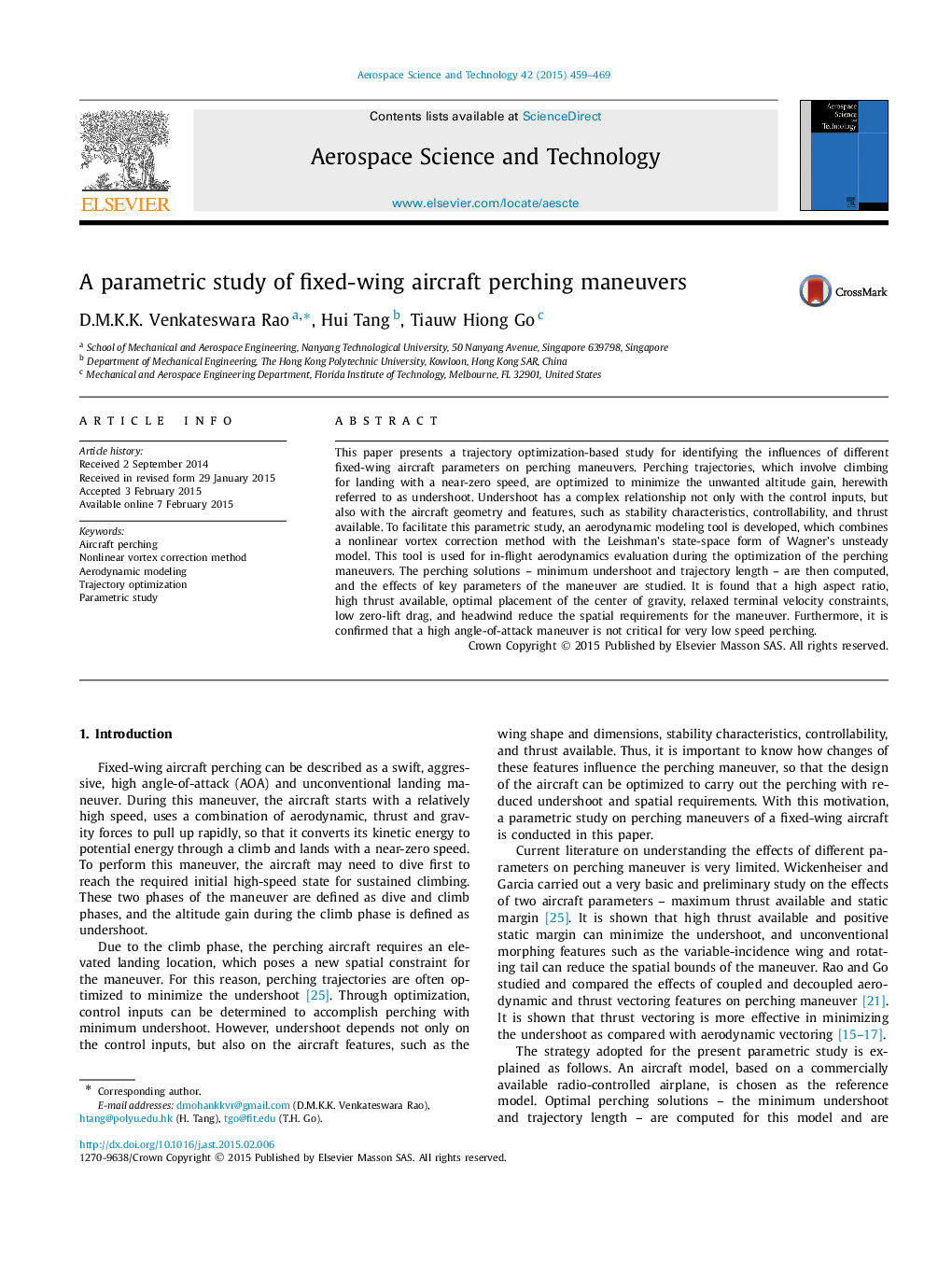| Article ID | Journal | Published Year | Pages | File Type |
|---|---|---|---|---|
| 1717944 | Aerospace Science and Technology | 2015 | 11 Pages |
This paper presents a trajectory optimization-based study for identifying the influences of different fixed-wing aircraft parameters on perching maneuvers. Perching trajectories, which involve climbing for landing with a near-zero speed, are optimized to minimize the unwanted altitude gain, herewith referred to as undershoot. Undershoot has a complex relationship not only with the control inputs, but also with the aircraft geometry and features, such as stability characteristics, controllability, and thrust available. To facilitate this parametric study, an aerodynamic modeling tool is developed, which combines a nonlinear vortex correction method with the Leishman's state-space form of Wagner's unsteady model. This tool is used for in-flight aerodynamics evaluation during the optimization of the perching maneuvers. The perching solutions – minimum undershoot and trajectory length – are then computed, and the effects of key parameters of the maneuver are studied. It is found that a high aspect ratio, high thrust available, optimal placement of the center of gravity, relaxed terminal velocity constraints, low zero-lift drag, and headwind reduce the spatial requirements for the maneuver. Furthermore, it is confirmed that a high angle-of-attack maneuver is not critical for very low speed perching.
